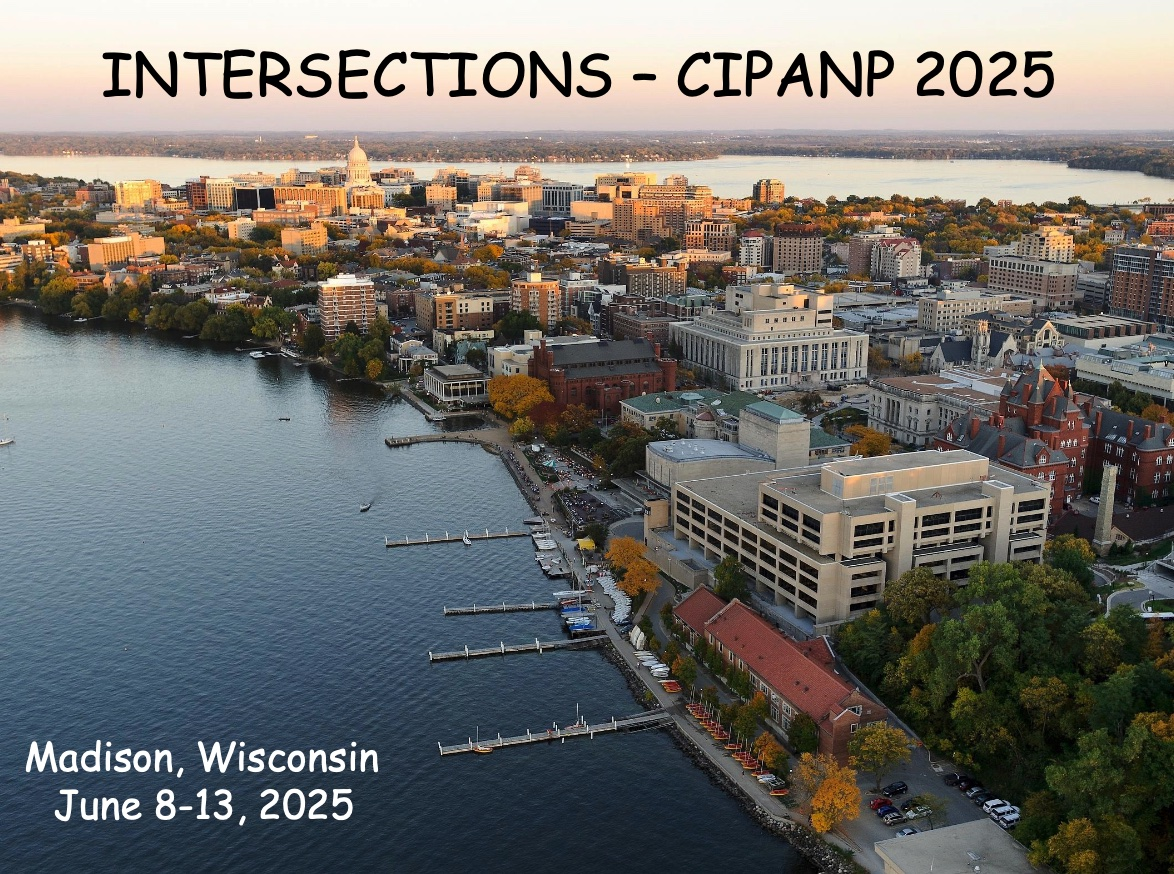Conveners
Physics at High Energies: Measurements and Machine Learning at the LHC
- Lisa Everett (University of Wisconsin, Madison)
Physics at High Energies: Future Colliders: Muon collider
- Lisa Everett (University of Wisconsin, Madison)
Physics at High Energies: Searches for BSM Physics at the LHC: Parallel 8
- Nicholas Luongo (ANL)
The W boson mass is one of the most interesting fundamental parameters of the Standard Model of particle physics, as it allows for model-independent probes for effects of new physics. This talk presents the latest results from the ATLAS experiment, based on proton-proton collision data, focusing on the methodology, systematic uncertainties, and implications of the W boson mass measurement.
The precise measurement of Higgs boson production and decay at the LHC continues to be a central tool for testing the Standard Model (SM) and looking for signs of new physics. This talk presents a comprehensive overview of recent Higgs boson measurements performed by the ATLAS experiment, using data from Run 2 and partial Run 3 of proton-proton collisions at center-of-mass energies of 13 TeV...
Some effects induced by SMEFT operators at one-loop have been fully computed, in particular, the renormalization of divergences by physical operators in single insertions of dimension-six operators. Important non-logarithmically enhanced contributions remain to be calculated. We discuss dimensional regularization in the Breitenlohner-Maison ‘t Hooft-Veltman scheme. The goal here consists of...
We describe several novel machine learning techniques to improve CMS searches and measurements. These include state-of-the-art transformer models for hadronic jet classification, flow and decorrelation methods for background estimation and MC parameter reweighting, and end-to-end analysis optimization. The impact of these advances on a selection of recent CMS results will be discussed.
The ATLAS experiment at the Large Hadron Collider relies on advanced machine learning (ML) techniques to enhance the reconstruction and identification of physics objects, optimize detector performance, and improve data analysis strategies. In recent years, ML methods have been extensively developed and integrated across various domains. This talk presents an overview of recent advancements for...
I will review the reach of a future 10TeV muon collider in the parameter space of fermion portal dark matter models in the freeze-in regime.
I study different fermion portal models and show that, in the freeze-in regime, their parameter space is bounded from all directions.
Different fermion portal models give rise to a host of interesting prompt or long-lived particle signals.
I will...
Over the last few years, muon colliders have emerged as an exciting
option for enabling access to the 10 TeV energy scale in the post High
Luminosity LHC era in a compact and power-efficient way compared to
proton-proton alternatives. However, significant research and
development is required to address the fundamental challenge that
muons are unstable, and will decay continuously while...
The standard candles of electroweak observables can be studied through the lens of neutrino-electron scattering as a purely weak process. We project the sensitivity of a neutrino detector situated around 100 meters away in the plane of a high energy muon storage ring or muon collider with $E_\mu = 0.25, 1.5$, and $5$ TeV muon beam energies, providing a highly energetic and highly intense...
A recent analysis for long-lived particles using data collected by the ATLAS detector at the LHC is presented. The analysis uses vertices reconstructed from track segments in the muon spectrometers to search for long-lived particle decays displaced up to 14m from the primary interaction vertex. The results are interpreted in terms of scalar-portal and Higgs-boson-portal baryogenesis models. A...
LHC experiments have essentially ruled out the existence of additional chiral fermions. Thus, new elementary fermions must be vectorlike with respect to the SM gauge interactions. LHC searches for vectorlike quarks typically focus on their mixing-induced decays into W, Z and Higgs bosons. In this talk, I will point out that vectorlike quarks may instead manifest themselves in events with 6 or...
Using the full (139~\mathrm{fb}^{-1}) of (\sqrt{s}=13\ \mathrm{TeV}) (pp) collision data recorded by ATLAS during Run~2, this search looks for a pseudoscalar (a) (CP-odd Higgs boson) produced with a top-quark pair or a single top\,+\,(W) and decaying via (a!\to!b\bar b). Events are selected in the dileptonic final state with exactly two opposite-sign leptons and at least three...
We consider a t-channel simplified model with a colored mediator and demonstrate the importance of considering non-perturbative effects for both relic density calculations and collider phenomenology. Specifically, we look at the impact of bound state formation and the Sommerfeld effect. We find that the parameter space thought to be excluded by direct detection experiments and LHC searches...
Modelling the transition from free to bound partons, the process of hadronization, intersects perturbative and phenomenological methods. The Lund string model has successfully predicted any number of hadronization phenomena over the years, yet remains deficient in a number of observables. The MLhad collaboration is using machine learned models to augment the string model and provide deeper...

